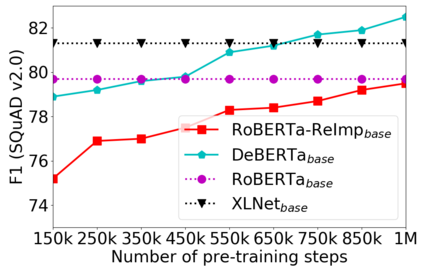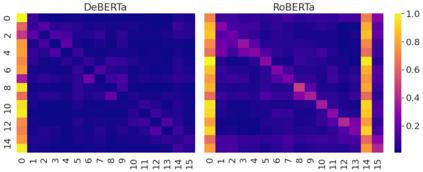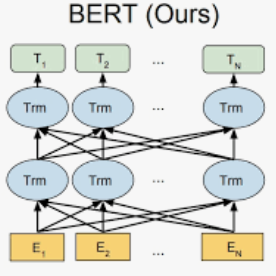
Recent progress in pre-trained neural language models has significantly improved the performance of many natural language processing (NLP) tasks. In this paper we propose a new model architecture DeBERTa (Decoding-enhanced BERT with disentangled attention) that improves the BERT and RoBERTa models using two novel techniques. The first is the disentangled attention mechanism, where each word is represented using two vectors that encode its content and position, respectively, and the attention weights among words are computed using disentangled matrices on their contents and relative positions, respectively. Second, an enhanced mask decoder is used to incorporate absolute positions in the decoding layer to predict the masked tokens in model pre-training. In addition, a new virtual adversarial training method is used for fine-tuning to improve models' generalization. We show that these techniques significantly improve the efficiency of model pre-training and the performance of both natural language understanding (NLU) and natural langauge generation (NLG) downstream tasks. Compared to RoBERTa-Large, a DeBERTa model trained on half of the training data performs consistently better on a wide range of NLP tasks, achieving improvements on MNLI by +0.9% (90.2% vs. 91.1%), on SQuAD v2.0 by +2.3% (88.4% vs. 90.7%) and RACE by +3.6% (83.2% vs. 86.8%). Notably, we scale up DeBERTa by training a larger version that consists of 48 Transform layers with 1.5 billion parameters. The significant performance boost makes the single DeBERTa model surpass the human performance on the SuperGLUE benchmark (Wang et al., 2019a) for the first time in terms of macro-average score (89.9 versus 89.8), and the ensemble DeBERTa model sits atop the SuperGLUE leaderboard as of January 6, 2021, out performing the human baseline by a decent margin (90.3 versus 89.8).
翻译:培训前神经语言模型的最新进展显著改善了许多自然语言处理( NLP) 的性能。 在本文中, 我们提出一个新的模型架构 DeBERTA( 以分散的注意力加强的 DBERTA ), 使用两种新技术改进 BERT 和 RoBERTA 模型。 第一个是分解的注意机制, 每个单词都使用两个矢量来分别编码其内容和位置, 单词之间的注意权重分别使用其内容和相对位置上分解的矩阵来计算。 其次, 一个强化的遮罩驱动器用来在解码层中包含绝对的参数。 DeBERTA( 以分解的注意力) DEBERTA( 以分解的分解方式) DEBERTA 。 此外, 新的虚拟对抗性格培训方法用于微调模型 改进模型 20. 0L 和 人类语言模型的效能和性能 。 我们显示这些技术分别通过 RETATA- L.













